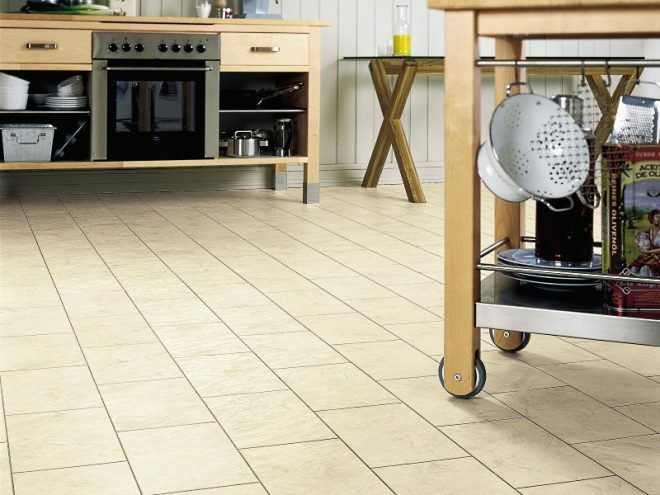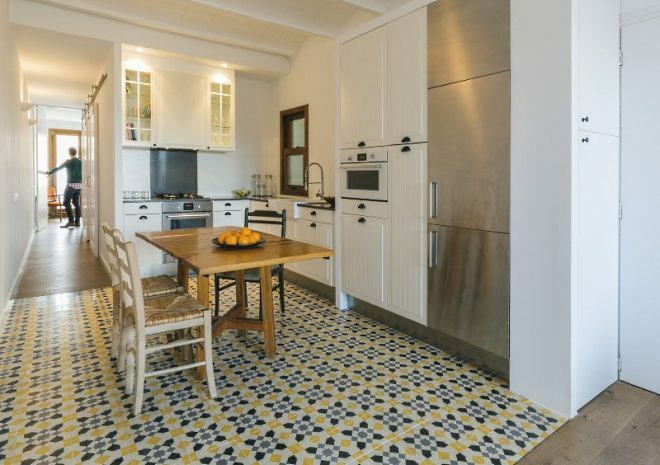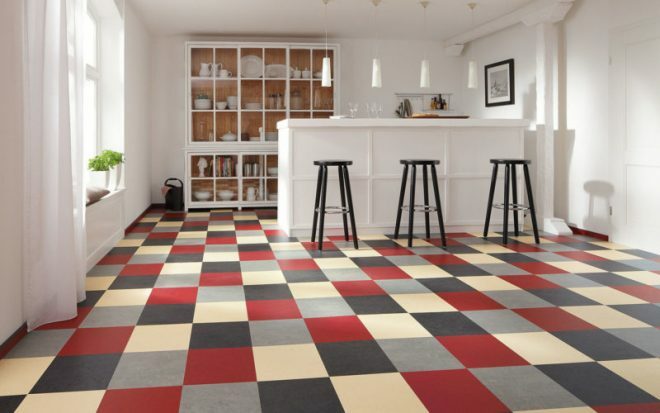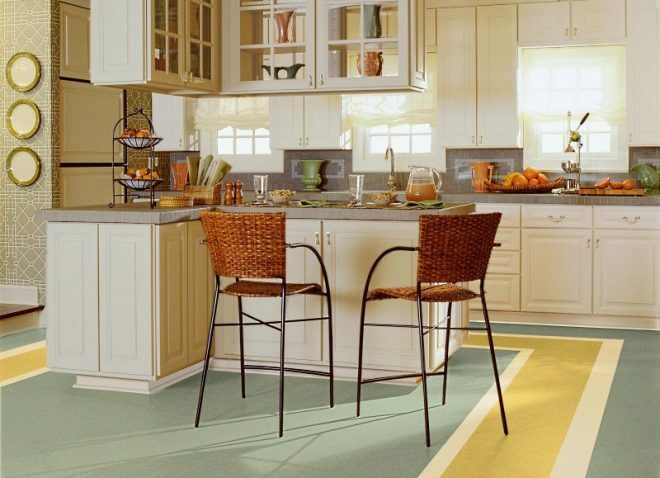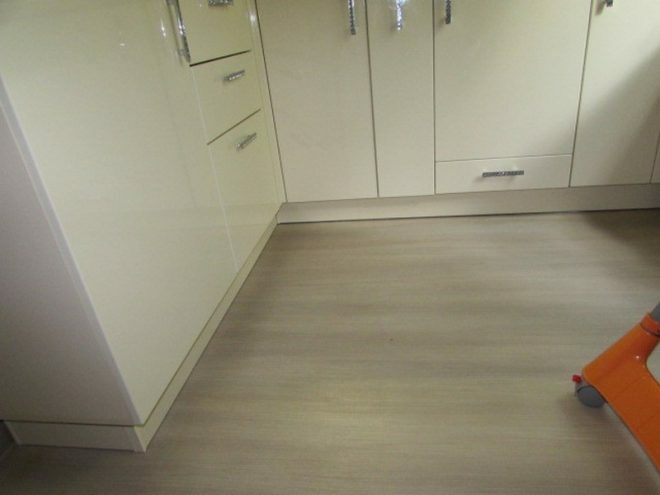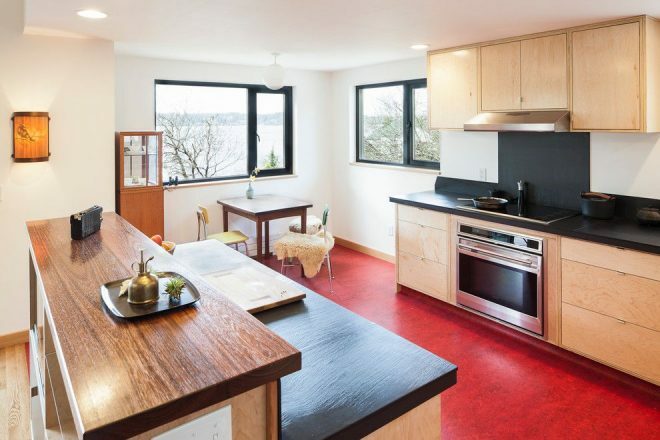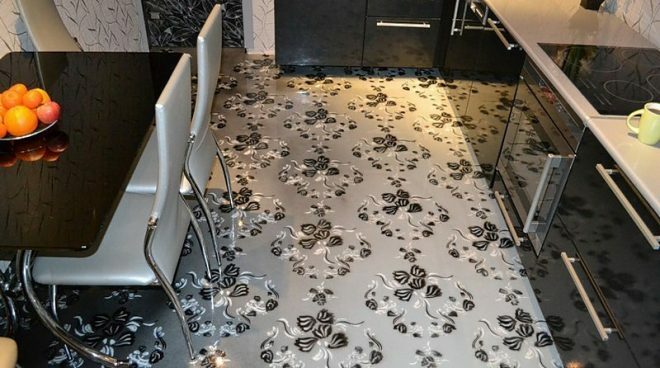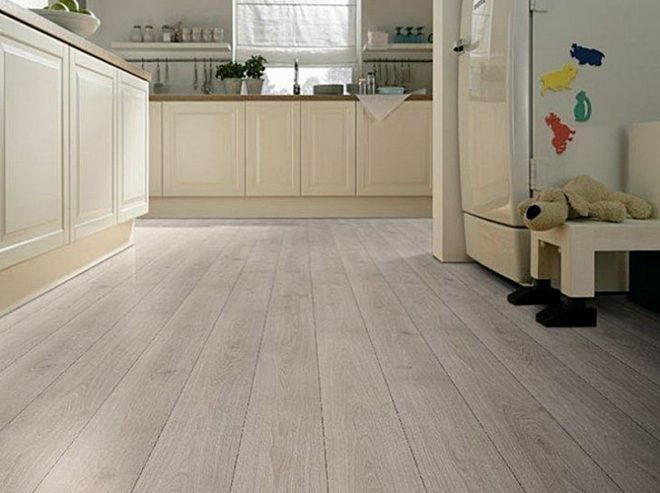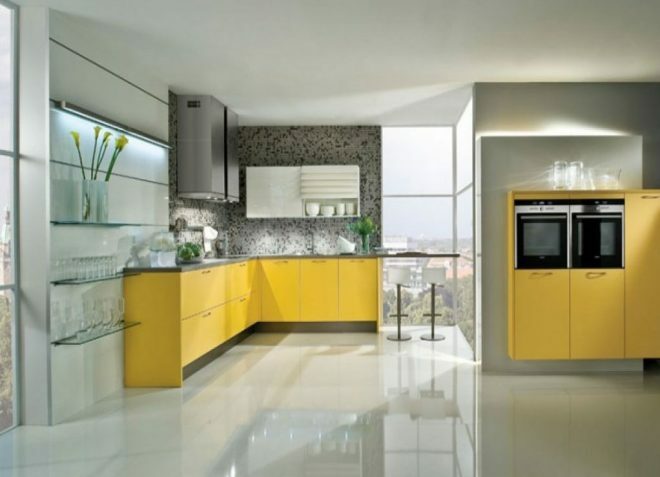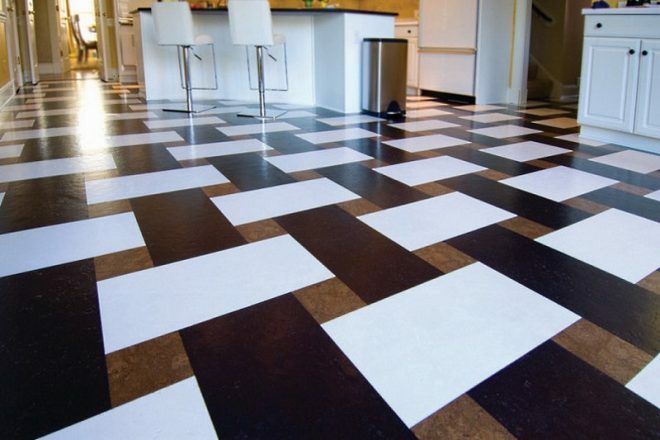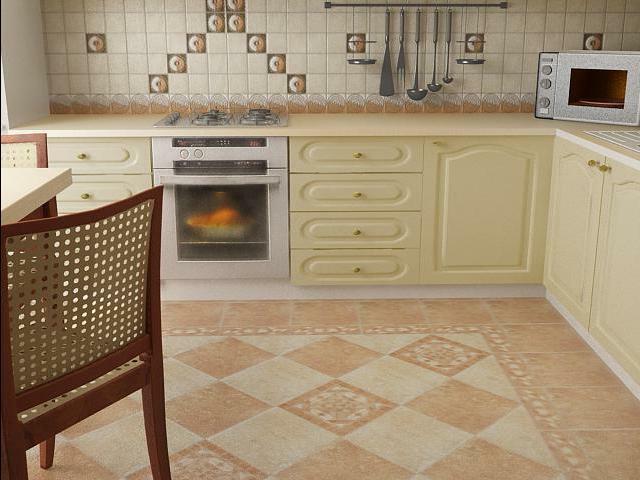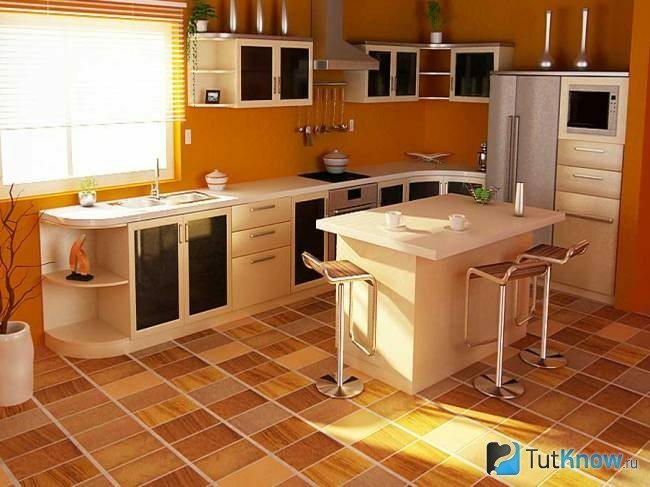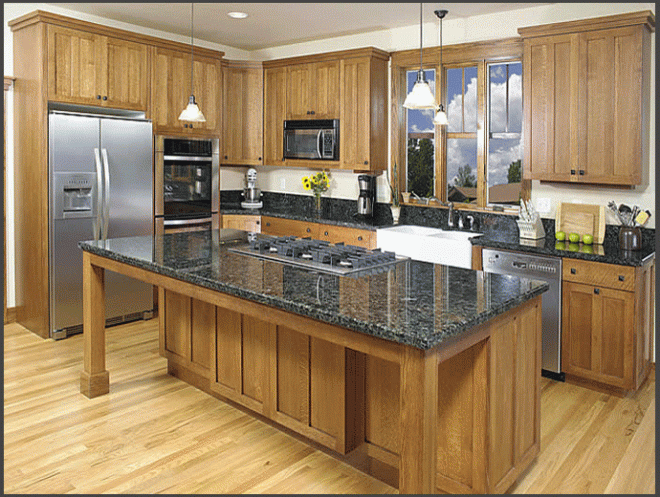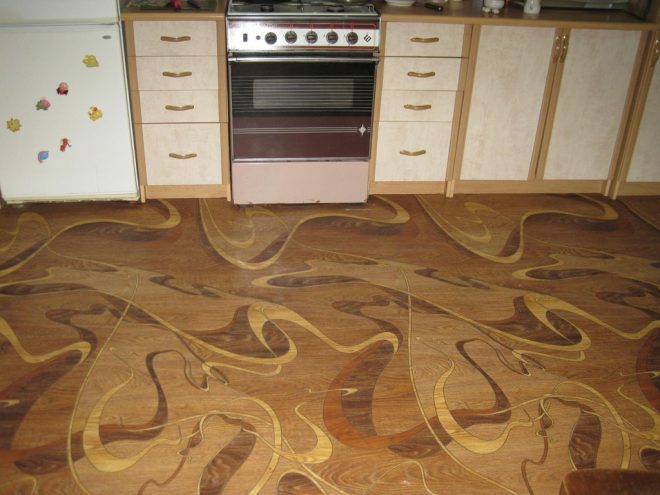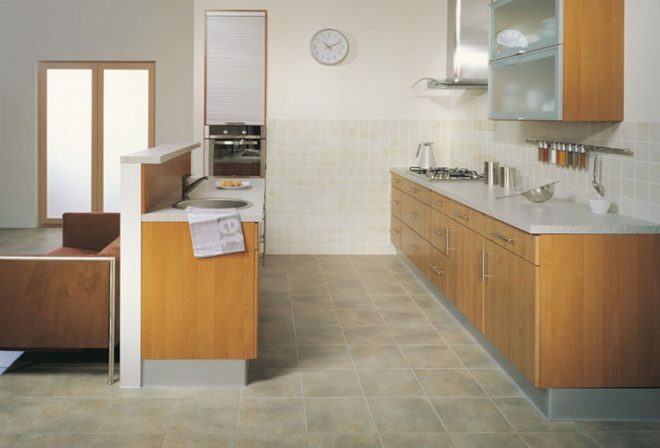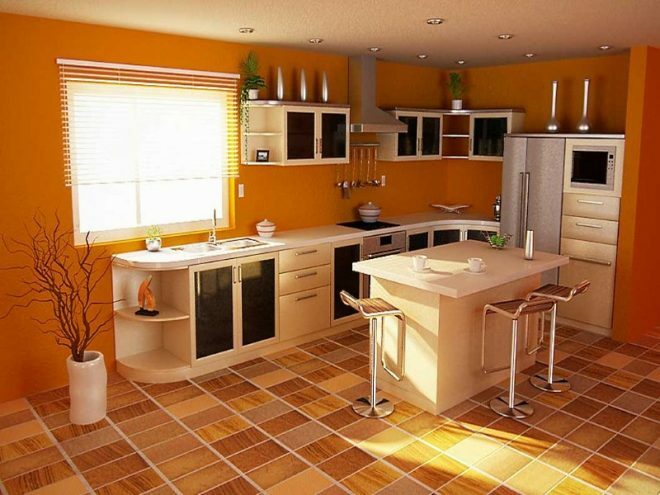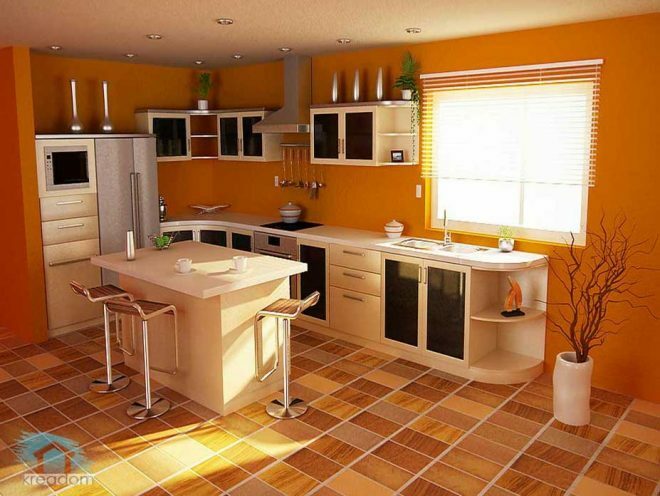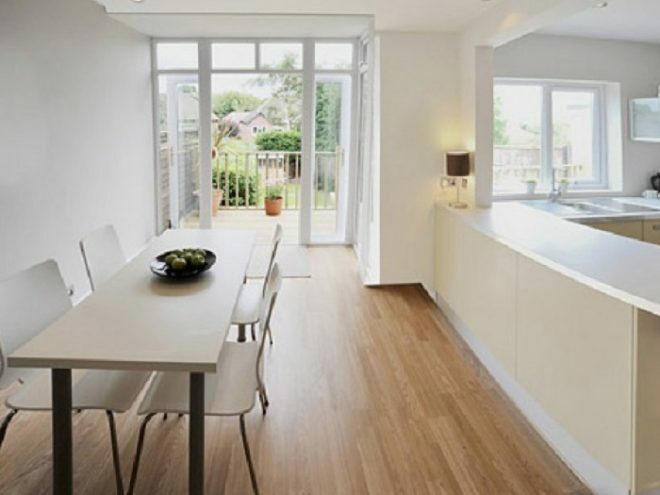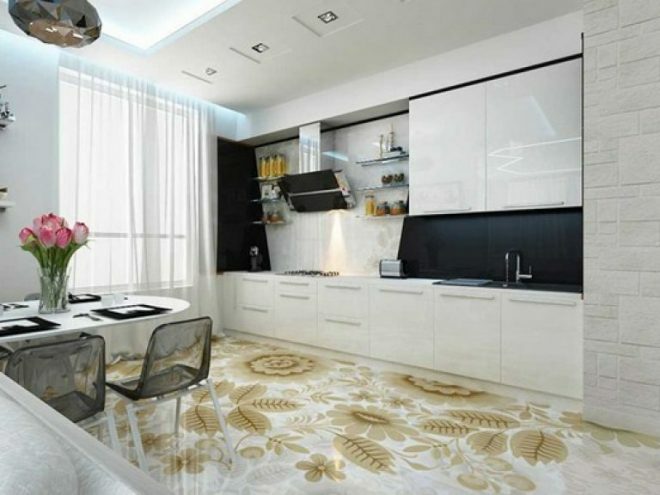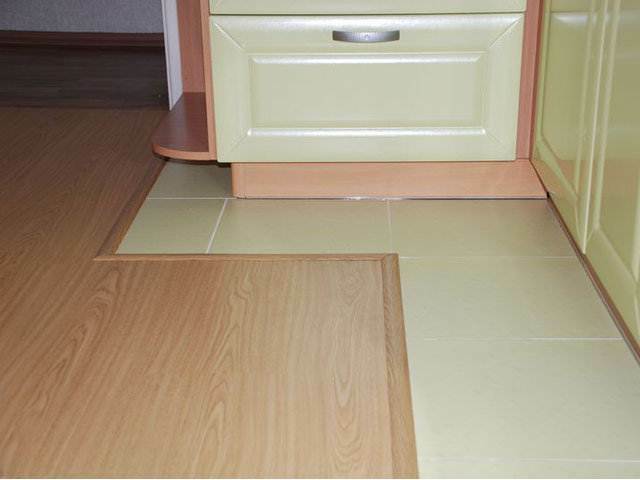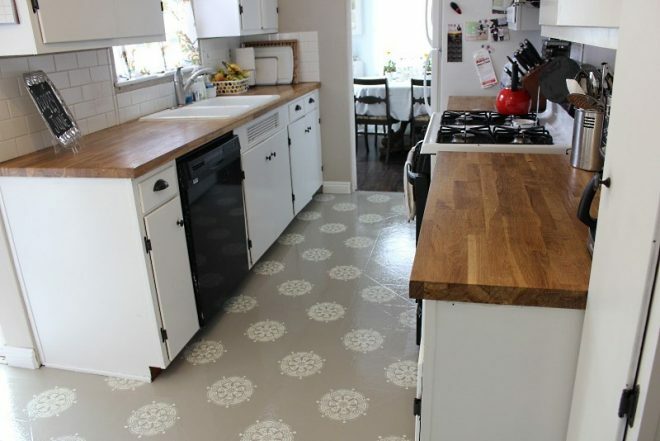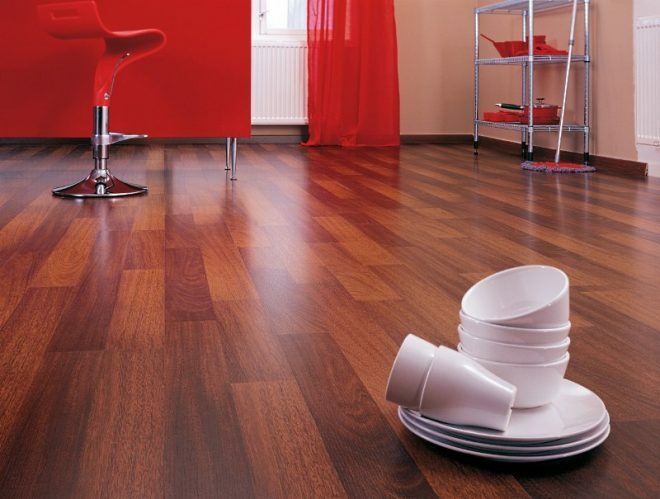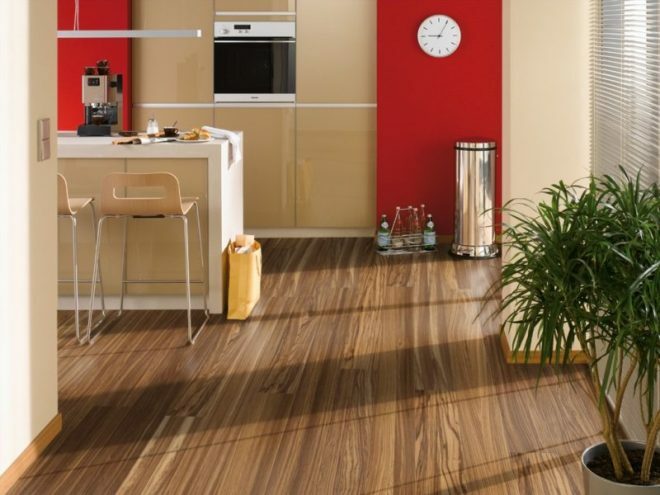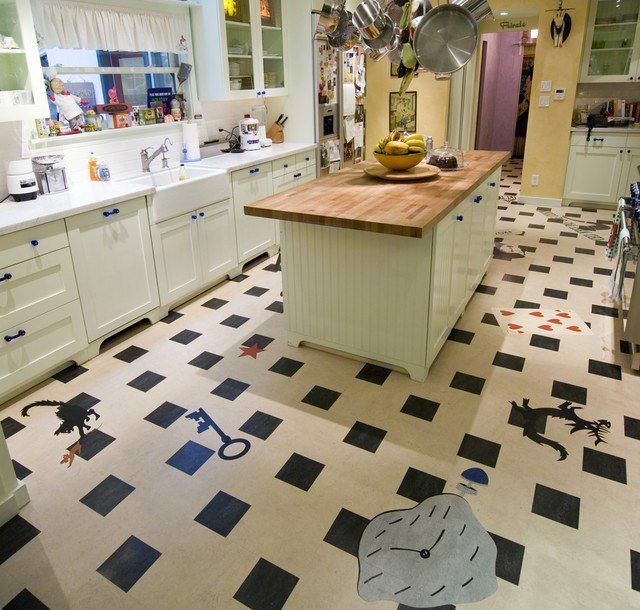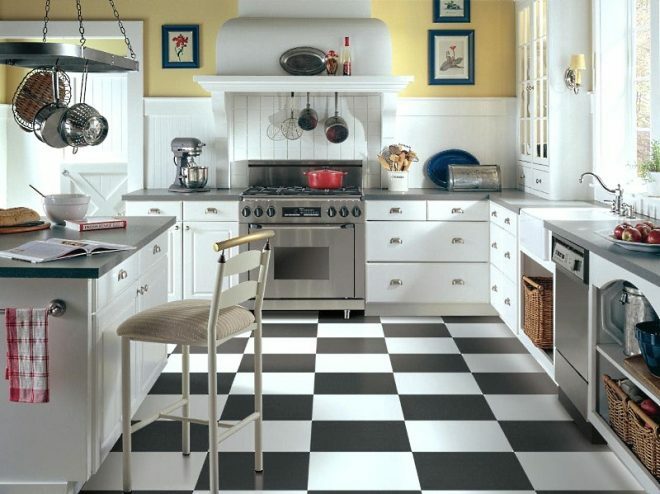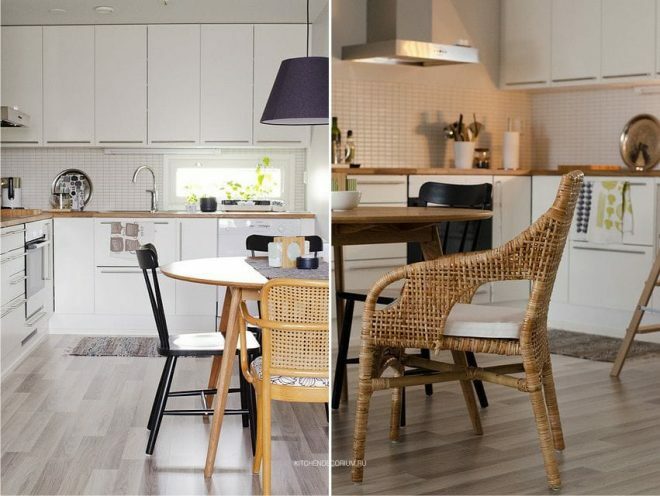Linoleum, familiar to all, is diverse. Types, GOSTs, classes - how to figure it out? It is easier to choose a floor covering for the kitchen after a virtual excursion among the bright rolls. How to choose the right quality linoleum for the kitchen, we will tell you in this article.
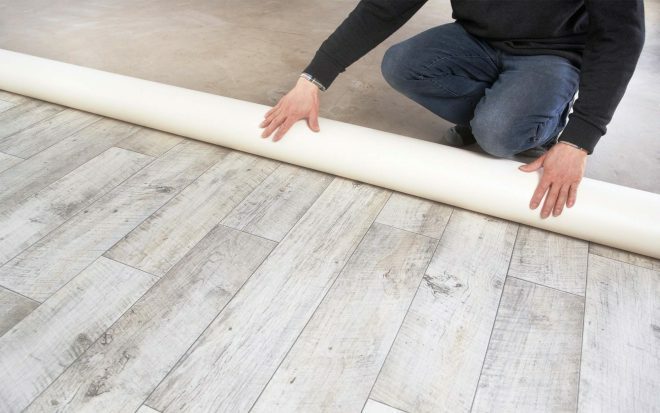
Varieties of linoleum
The easiest way to decide is by a pictogram with icons of people and houses on a substrate. The larger the house, the higher the wear resistance class. Industrial are marked with a workshop under the pipe. For the kitchen, we choose those rolls on which there is a one-story house, that is, the 22nd or 23rd class. Where the icon with a high-rise is also suitable. These are grades: 31–34. They are more expensive. Designed for offices, boutiques, shops - in places of intense traffic.
Attention! Earned on our website kitchen designer. You can familiarize yourself with it and design your dream kitchen for free! May also come in handy wardrobes designer.
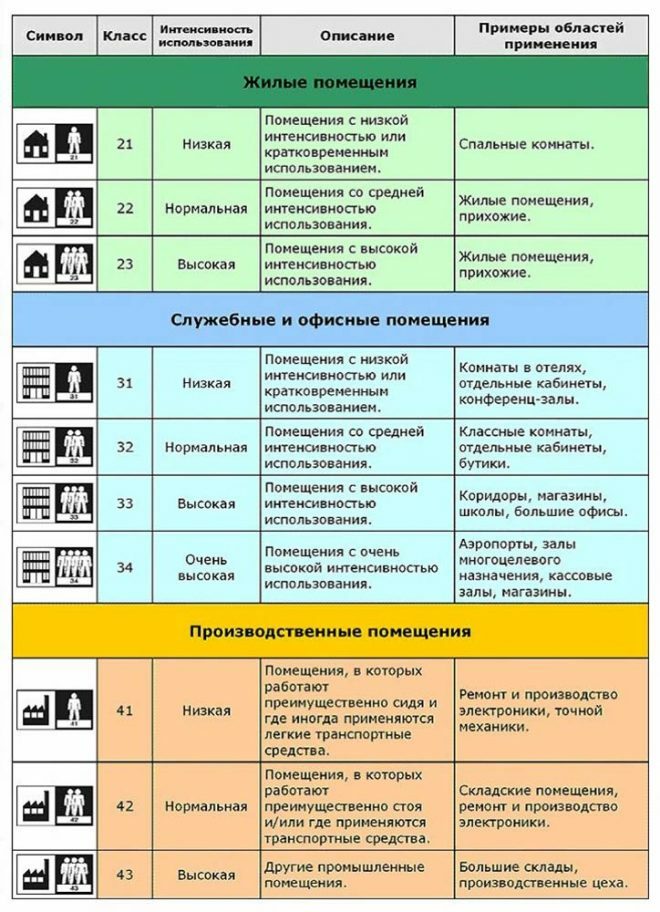
Class |
Intensity use |
Description |
Region application |
22, 23 |
Low |
Guaranteed environmentally friendly |
Rooms kitchens, hallways |
31, 32, 33, 34 |
Average |
Boutiques, the shops, hotels |
|
41, 42, 43, 44 |
Low, medium, high |
Conditionally environmentally friendly |
Workshops, ancillary premises |
Class 21 can be placed in the bedroom, nursery, pantry. There are class 1 coverings - single layer fishing mats, for example. The icons are made for customers. The complete description of the product contains only a certificate. Russian manufacturers adhere to GOST, but sometimes they come up with their own specifications. Foreign suppliers mark compliance with EN 649 - the scale of wear resistance and shrinkage.
F - low wear resistance |
Shrinkage of thickness 0.3-0.6 mm |
M - medium |
0.15–0.3 |
P - high |
0,08–0,15 |
T - very high |
Less than 0.08mm |
That is, advanced firms guarantee a return from the compressed state to the original thickness.

GOST does not contradict EN 649. It involves the production of floor coverings with a subdivision into 6 types - depending on the method of production:
- VK - roller-calender without front protective layer;
- VKP - the same with a front protective layer of polyvinyl chloride film;
- EK - extrusion without a protective front layer;
- EKP - the same with a front protective layer of polyvinyl chloride film;
- PRZ - a printed coating, protected by a transparent polyvinyl chloride layer;
- PRP - contact-coated with a front protective layer of polyvinyl chloride film.
As a result, GOST is tougher. Imported produced according to EU standards. Domestic - according to internal production specifications, GOST, plus the same EU standards. TU (TU requirements are valid only within the enterprise) can create a beautiful appearance of anything. But if GOST + EU - then the quality is guaranteed.
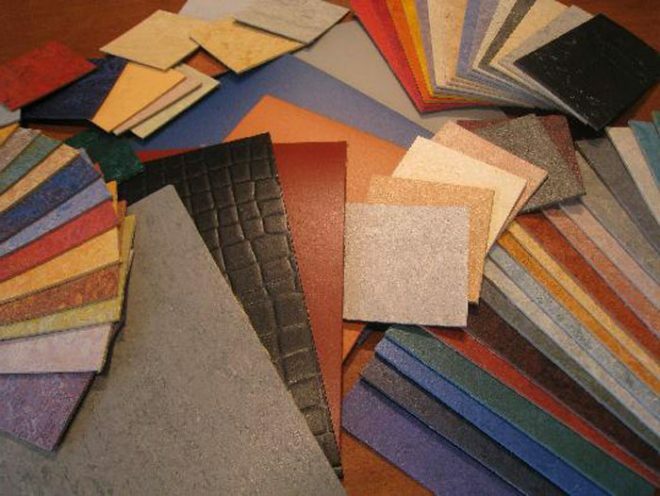
GOST states: “Linoleum should be made in one- and multi-color (marble-like or with a printed pattern) with a smooth or embossed front surface. " For example, marking PVC-PRP means that polyvinyl chloride linoleum produced by contact-coated way. Extrusion is easy to recognize by the marble structure. The layered is often covered with a film, the embossed is the first point, i.e. VC.
Natural
Natural ones are collectively called marmoleums (from Italian marmo - marble). Available in rolls and slabs. The components have remained unchanged since the invention:
- bark of a cork tree;
- wood flour;
- marble, lime powder;
- clay dyes (ocher), iron oxide dyes (red lead);
- binders - linseed, olive, palm oil,
- jute mesh - reinforcing base;
- gum, beeswax - plasticizers.
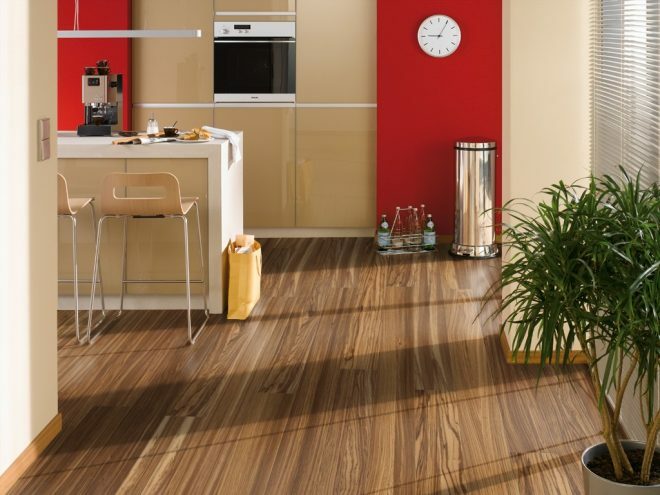
Russia was the pre-revolutionary leader in the production of marmoleums. The factories were located in Odessa and Riga. Before the war, Germany became the center of linoleum. “Persian rugs that need not be knocked out” were yellow, greenish, brown. The name corresponded - a drawing a la Persia was applied.
Modern marmoleum composition is rarely tinted. The structure of the crumbs is reminiscent of marble. It is crowded, along the top of the warm background, the structure of wood, stone, ceramics is added (the result of additional rolling). It is easy to recognize by the lining mesh made of jute, flax, hemp. Marmoleums are expensive but 100% environmentally friendly. Suitable for the kitchen, because they withstand forces of 16 MPa (160kg / cm), prevent slipping, do not exude unpleasant odors, durable - from 7 years service life, additionally - anti-fungal effect on base.
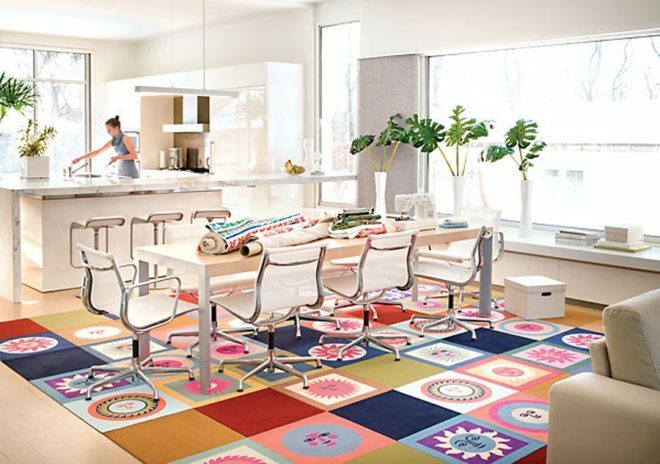
The latter quality is especially important for allergy sufferers. In the oil boom era, natural coatings were rare on the market. Phenol and diethyl ether were used as a binder. Nowadays, additives are prohibited, but they can be found on the remains of warehouses of TU-productions. An important quality of marmoleums is dielectricity.
Artificial
Synthetic doesn't mean bad. Deep processing of petroleum products, introduction of the production of inert materials: polyvinyl chloride (PVC), polyvinyl acetate (PVA), alkyd resins, nitrocellulose, polyester, polyester, bitumen - a factor pushing natural from the market. Synthetics do not contain the initial substances "linum" (flax) & "leum" (oil).

But the material has new useful qualities: the ability to roll up in a tight roll, low price, rich color palette, pattern stability under a mirroring PU-film.
Artificial linoleum is divided into:
- single layer (homogeneous),
- heterogeneous (multilayer).
Lamination improves the life of the base foam. As a rule, it is PVC.
According to the material of the main coating layer, synth. coatings are divided into:
PVC
Among them: single-layer (collandrovy). Runs under pressure. Surface hardness is obtained from extrusion.
Multi-layered. Heterogeneous PVC is similar to a layered cake: on top there is a polyurethane film (from 0.07 to 0.8 mm), which prevents pigments from fading, moisture absorption, and aggressive substances. The second layer is paint, the third is a colored base made of the same tinted PVC.
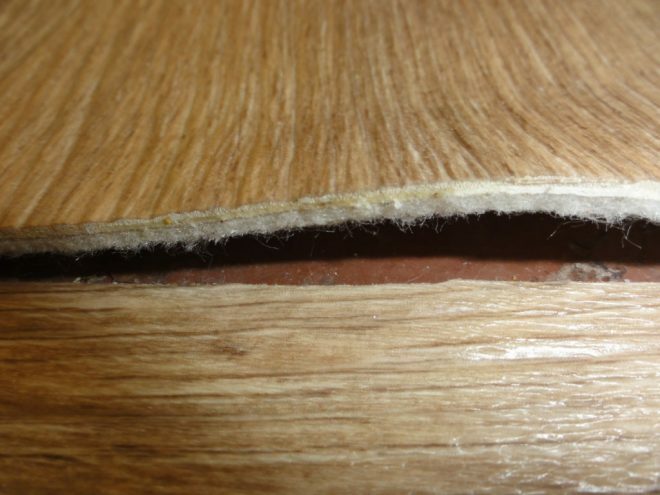
The fiberglass mesh is hidden between the second layer and the base layer (protector). There are 4 layers in total, 2 of which are difficult to see. But they are contained - what the "kitchen" class needs.
Colland PVC coatings can have a reinforcing substrate. It is made of polyester. It looks like a flannel. It is often presented as floor insulation, which is reasonable. However, the main purpose of the polyester lining is reinforcement. The second purpose is noise reduction. Thermal insulation is effective, which is especially important for a concrete base.
Rubber
Rubber linoleum belongs to the multifaceted group of bituminous coatings. Includes the forgotten metlakh tiles, shock-absorbing garages, sports tracks, composite tiles, where the edge is processed according to the principle of "Lego", carpets with a rubber base, garden tracks. The second name is relin (rubber + LINOLEUM). The thickness is different. Rolls or tiles up to 8 mm thick are suitable for the kitchen.

Special additives make the evaporation of benzene from the reline to a minimum. Relin is most closely related to plastics: the rubber mass is filled with colored plastic chips. Relin's safety is evidenced by the fact that it is used in the decoration of operating rooms, for preschool institutions, exhibition centers, and sales areas. Quiet walking, springy compensation of forces, exquisite decorative effect. These qualities have given yesterday's "rubber mats" a new impetus to popularity. The best designs: embossed "coin", checkerboard embossing. Linoleum-relin has a pvc coating - just like most of the linoleum family. Relin is suitable for the kitchen.
Nitrocellulose
Colloqueiline (nitrocellulose) flooring is recognized by its incredible gloss, saturated colors. The layer is thin, no lining. Highly flammable. The environmental friendliness of the material is noted. Since the invention of nitrocellulose (1832), its composition is the same - starch, wood cellulose. But acetone is involved in the production. The residual factory odor is audible, but disappears quickly. Handsome, but hardly suitable for the kitchen.
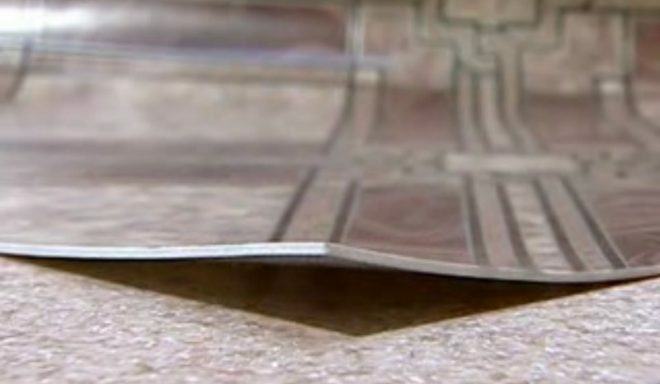
Alkyd
Alkyds are polyester polymers, one of the earliest advances in polymerization. Polyester, as a binder, is harmful; it is widely withdrawn from production. The extrusion process at t 90 degrees turns alkyds into safe, but with a characteristic "odor" materials. The coating is widespread due to its low cost. Found on buses, trains: the price has coincided with the incredible durability - about 40 years of service. Alkyd resins (polyesters) firmly bind all kinds of waste from the chemical industry (i.e. n. vat). To prevent fragility, the layer is reinforced with a polyester mesh.
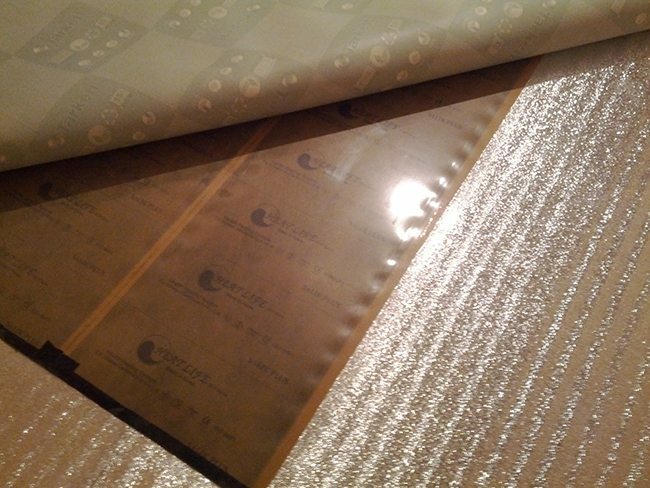
Alkyd floors are unlikely to please children, pets, birds, adults suffering from respiratory diseases. In the kitchen, such alkyd products are suitable, but if "the doctor allowed." Rolls marked with TU are most often alkyd.
Taking into account health and convenience, we assign 5 stars to natural, 4 stars to multilayer PVC, 3 stars to relin, and 2 to single-layer extruded PVC. The others divide zero and one. The price factor in the row is directly proportional.
How to choose: classification by application
Shouldn't you be tempted to pick up something even more expensive, but reliable, with a service life of up to 40 years? The class of public and domestic purposes is intermediate, acceptable here and there, and deserves attention.
When creating a substance for the layer, the manufacturer performs tests, compares the characteristics with competitors' analogues. That is, someone has already thought for the consumer.
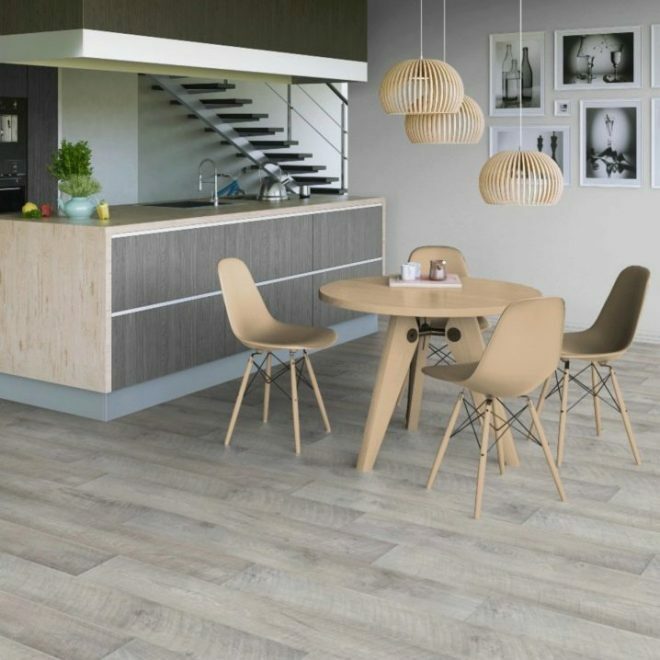
The GOST classifier clearly divides the floors into:
- production,
- residential,
- public,
- administrative and household.
Possible kitchen finishes include the last three specifications. Quote: “... made of polyvinyl chloride on a fabric backing, single and multi-layer without a backing, on a heat and sound insulating backing, from alkyd, relinated, based on synthetic fibers... must meet the requirements of GOST 7251-77, GOST 19247-73, GOST 14632-79”.
Which one should you choose - household or commercial? Specifications
Commercial is more expensive, but better in terms of wear resistance. Semi-commercial takes an intermediate value. This factor is reflected in the table of technical characteristics:
Indicators |
Domestic |
Semi-commercial |
Commercial |
weight |
1.25... 2.25 kg / m2 |
1.6... 2.5 kg / m2 |
2.7... 2.8 kg / m2 |
thickness |
0.15... 3 mm |
no limit |
no limit |
thermal conductivity |
0.018... 0.035 W / m ∙ K |
no limit |
no limit |
sound absorption |
13... 18 dB |
12... 16 dB |
6... 10 dB |
water absorption |
less than 1% |
“ |
“ |
shrinkage |
less than 0.2 mm / m |
no more than 0.1 mm / m |
no more than 0.02... 0.1 mm / m |
price |
3.5... 10 € / m2 |
5.5... 15 € / m2 |
10... 40 € / m2 |
The table shows that the requirements for household appliances are much more regulated than others.
Types and sizes
According to all TU, EU requirements, GOST, durable household linoleum should be multi-colored, easily wound on a rod with a diameter of Ø45 mm without cracks (for semi- and commercial - Ø10), which guarantees elasticity and, as a result, service life: the first - from 2 years, the second - from 7 years, the third - 10-25 years.
The secret is not in the base layer, but in the upper super-thin coating. The thickness of the covering membrane varies:
- 0.15 mm - for bedrooms and living rooms;
- 0.20 mm - in children's rooms;
- 0.25 mm - for use in kitchens, corridors, hallways;
- 0.30 mm - for use in office, office premises with an average intensity of movement of people;
- 0.50 mm - for use in office, office premises with high movement intensity ;,
- 0.8 mm - for commercial coatings.
The low shrinkage of commercial samples allows rolls up to 14 m wide to be produced. Non- and semi-commercial ones are produced in multiples of 0.4 m - 1.2–2.4, household samples - in multiples of 0.5 m: 1.5–2–2.5 up to 5 m in width.
Single layer
- Rubber. It can be recognized by the relief, pimples of fused "chips", by the roughness of the incoming granules. Release form - 1–1.3 m. Large areas are covered by welding.
- Nitrocellulose fuel. It is produced without a backing, but with a thickness of 2–6 mm it has sufficient strength for floor coverings. It does not correspond to the G1 fire certificate (the requirements for G2 – G4 are lower), therefore it is not suitable for kitchens.
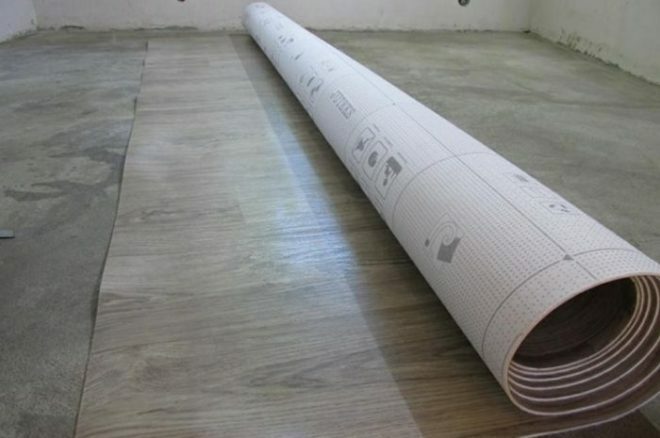
Multilayer
- Marmoleum;
- PVC;
- Alkyd linoleum. Covers 20% of the market. The strip obtained during the extrusion process is fed hot onto a mesh base made of natural fibers. Alkyd is recognizable by small anti-slip notches. Natural components make it more expensive, but the price is reasonable, given the environmental friendliness of the material. Two-layer alkyd meets the requirements for household coatings rather conditionally. Possible in the kitchen away from the hobs.
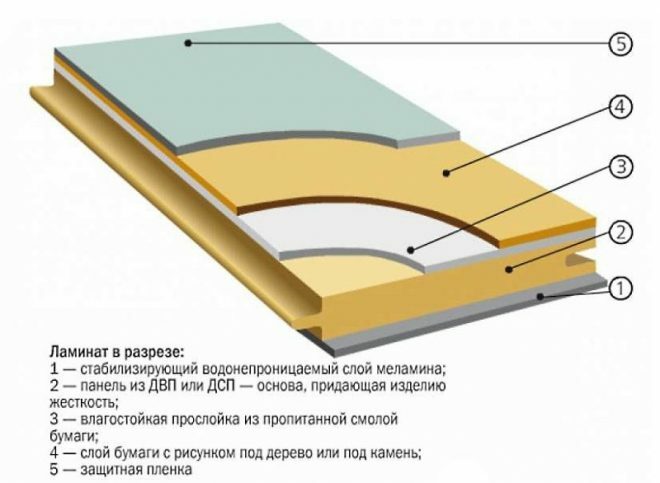
Liquid
The floor covering can be poured directly onto the concrete floor. A screed h = 0.8-1 cm is made with a concrete mixture (cement grade 400, B15). After drying (2 days), the screed is covered with a self-leveling cement mixture (“Wave” type). Application is carried out in bulk, spread with a toothed roller. In the future, the surface is primed, poured with epoxy, showered with granules, poured with epoxy resin again.
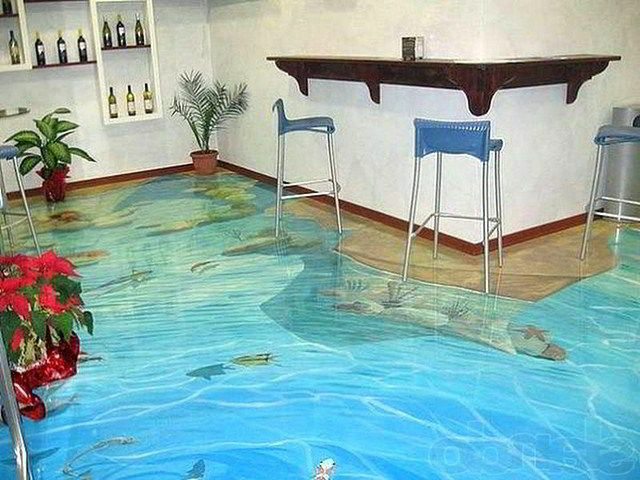
Innovation - 3D drawing. The process is similar to the previous one. Only the “chips” between the layers are replaced with a transparent film with a photo print.
What to lay: tips for choosing high-quality durable linoleum for the kitchen
All linoleums recommended for the kitchen can be used. The commercial cluster is recognizable by its somewhat dull color with a crumb texture. Considering its durability, it is used for applications - the motif "star", "flower", squares, concentric circles. The parts of the pattern are adjusted to each other, fused with a special cord.
High-relief PVC and rubber carpets for the kitchen are not suitable: the former are too vulnerable, rubber is poorly washed - they are embossed. PVC smooth is what you need.
In-house quality check
The smell betrays a fake. The sample should not drag on. After bending, good linoleum easily returns to its original state. In a multilayer top protective layer, it should not bubble, peel off. The absence of a mesh of cracks is the norm. On the reverse side there should be neat stamps with euro icons or inscriptions on compliance with GOST. On a roll wrapped in cellophane, there should be a label with markers:
- the name of the manufacturer, its trademark;
- product designation;
- batch number, date of manufacture;
- linear dimensions of the web in a roll;
- number L, m2;
- OTK or braker stamp;
- brief information about the application;
- shelf life.
Design solutions: textures and colors
- For classic kitchens, the best examples are in the form of artistic parquet, identical ones for country, Provence, Victorian style. The pattern "ceramic tiles" in these styles is also appropriate. The degree of "wear" of old wood, imitation of valuable wood species is taken into account in conjunction with the walls, furniture.
- The wide floorboard pattern is designed for Scandinavian and loft style.
- Techno, hi-tech suggest shades of gray, silver, abstract motives. The trend is the "rusty fused metal" pattern.
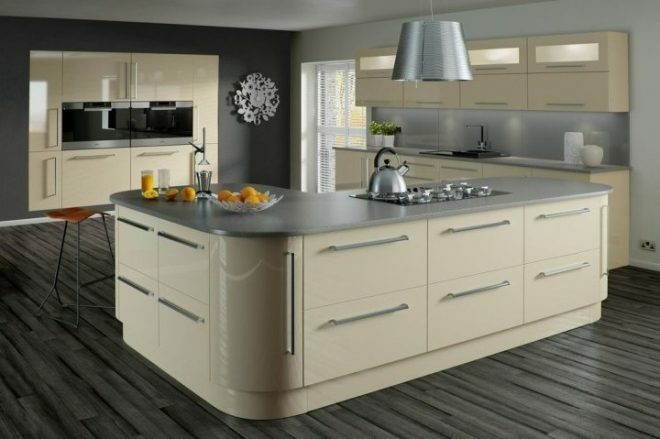
Top brands
The world leaders in flooring are the following companies:
- IVC (Belgium),
- IDEAL (Belgium - RF),
- Tarkett (Serbia - RF),
- Juteks (Slovenia),
- Grabo (Hungary),
- Armstrong (USA),
- TORLYS (Canada),
- Forbo (Belgium),
- Komitex-Lin (RF - China),
- Polystyl (Serbia - RF).
Each of the companies produces a huge range of residential flooring, as well as specific products - right down to ballet floors.
Laying rules
An invariable condition for laying all linoleums is transportation in a roll. In frosty time, the roll is not rolled for 48 hours. For another day, the material is laid out unfolded.
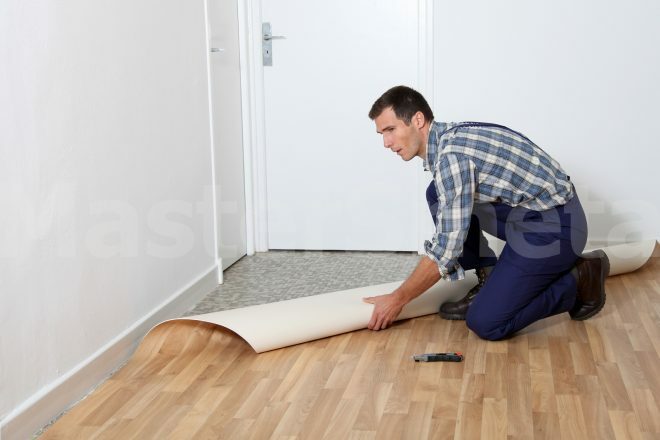
The layer should not be laid close to the wall. An indent of 1.5 cm is required. Unglued linoleum up to 25 m2 is reinforced with baseboards. The unfolded roll should lie without bumps, lying at an angle on the far wall. From the passage, the drawing should be parallel to the near wall. The bubbles should settle, then the excess is cut off.
They are glued to concrete, plywood, chipboard, strictly following the instructions of the adhesive. Narrow strips are joined with a special glue in the form of a syringe, protecting the areas with masking tape.
Surface preparation
The surface should be flat, dry, not flaking, free of fungus, cracks. The concrete floor is putty, polished, primed, leveled with bulk mixes. It is important that each layer is completely dry. The final leveling is carried out by means of backing sheets made of wood, chipboard materials.
DIY styling
At the beginning of leveling the old floor, the most protruding part of it is determined. The protruding parquet floor can be removed with a milling cutter. The drip level will be an indispensable tool at the preparation stage.
Old linoleum is cleaned, degreased, cracks are repaired. Only after the crumbs and lint have been removed can the new canvas be rolled out.
Underfloor heating installation
Linoleum suitable for underfloor heating is marked with a “zigzag” pictogram.

In addition to the choice, it is worth paying attention to the careful preparation of the surface to be covered. They are glued with specific substances produced by the manufacturer of the purchased linoleum. The adhesive mastics are applied with a notched trowel evenly in the layer specified in the instructions. Its usual thickness is 1.5 mm. Bonding does not eliminate the need for bonding the strips. Several rolls are laid out and joined in turn.
On a warm floor, coverings without gluing are acceptable. Unlined linoleum pieces are fixed with double-sided tape every 40 cm.
Photo: linoleum in the kitchen
In conclusion, about linoleum, we can say the following: the material is advanced, regulated by production parameters, and affordable. It is a good choice for self-styling, and the wide assortment contributes to the implementation of the original design idea.
average rating 0 / 5. Number of ratings: 0
No ratings yet. Be the first to rate.
